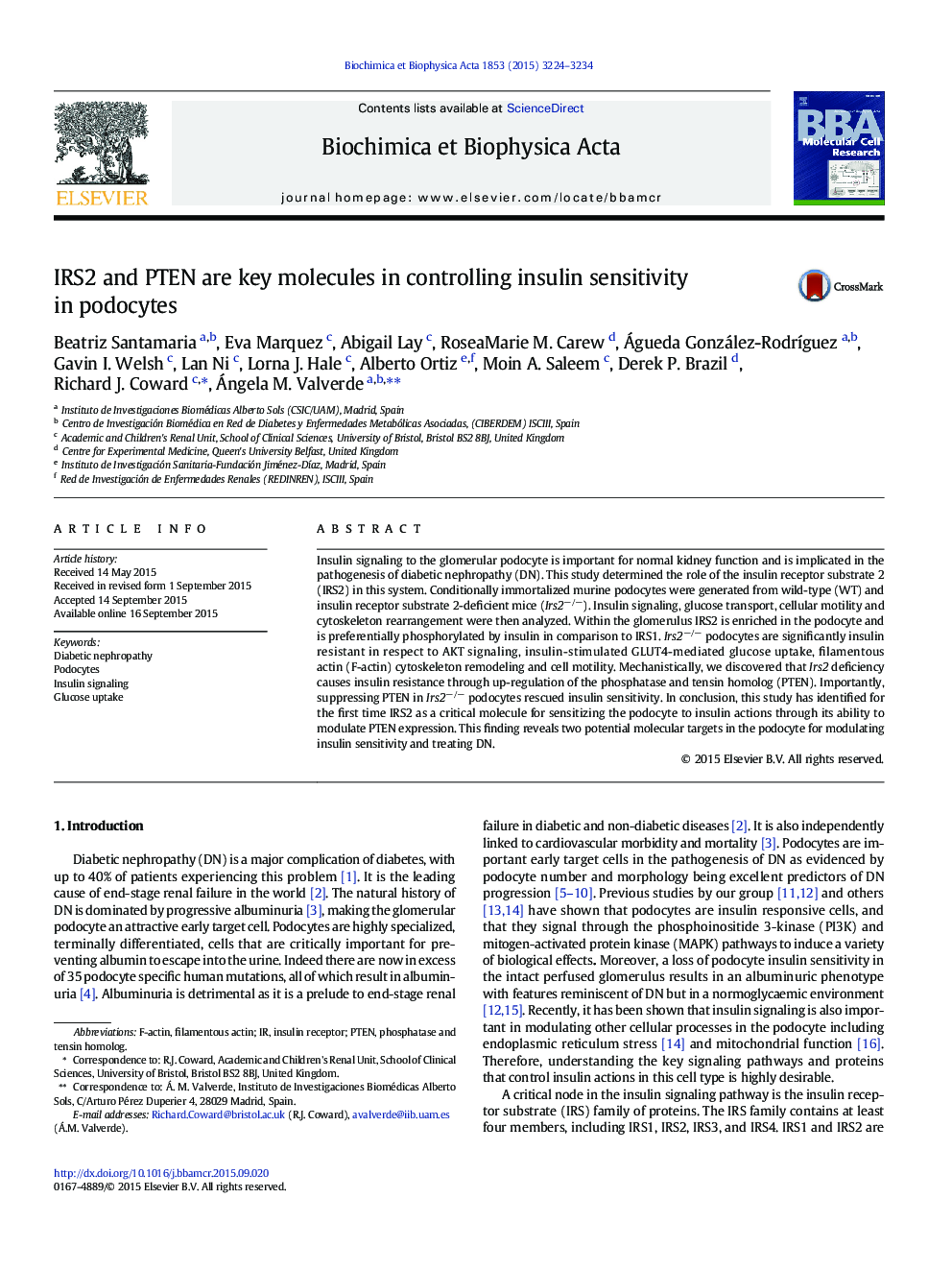| Article ID | Journal | Published Year | Pages | File Type |
|---|---|---|---|---|
| 1950436 | Biochimica et Biophysica Acta (BBA) - Molecular Cell Research | 2015 | 11 Pages |
•IRS2 is enriched in the podocyte within the glomerulus and phosphorylated by insulin.•In podocytes IRS2 is critical for the activation of Akt signaling, GLUT4-mediated glucose uptake, filamentous actin (F-actin) cytoskeleton remodeling and cell motility.•Insulin sensitivity is rescued by suppressing PTEN in IRS2-deficient podocytes.
Insulin signaling to the glomerular podocyte is important for normal kidney function and is implicated in the pathogenesis of diabetic nephropathy (DN). This study determined the role of the insulin receptor substrate 2 (IRS2) in this system. Conditionally immortalized murine podocytes were generated from wild-type (WT) and insulin receptor substrate 2-deficient mice (Irs2−/−). Insulin signaling, glucose transport, cellular motility and cytoskeleton rearrangement were then analyzed. Within the glomerulus IRS2 is enriched in the podocyte and is preferentially phosphorylated by insulin in comparison to IRS1. Irs2−/− podocytes are significantly insulin resistant in respect to AKT signaling, insulin-stimulated GLUT4-mediated glucose uptake, filamentous actin (F-actin) cytoskeleton remodeling and cell motility. Mechanistically, we discovered that Irs2 deficiency causes insulin resistance through up-regulation of the phosphatase and tensin homolog (PTEN). Importantly, suppressing PTEN in Irs2−/− podocytes rescued insulin sensitivity. In conclusion, this study has identified for the first time IRS2 as a critical molecule for sensitizing the podocyte to insulin actions through its ability to modulate PTEN expression. This finding reveals two potential molecular targets in the podocyte for modulating insulin sensitivity and treating DN.
